FOSSIL PAGE
The trilobites were dwellers of the ancient seas and are now all extinct. They had thick, tough, outer
coverings and were composed of many segments, each of which bore a pair of limbs. They are
related to modern-day arthropods (spiders, scorpions, etc.)

The ammonites were any of a number of cephalopods (related to modern squids, octopus, etc.)
that had a flat, spiral shell. They became extinct about the same time as the dinosaurs.
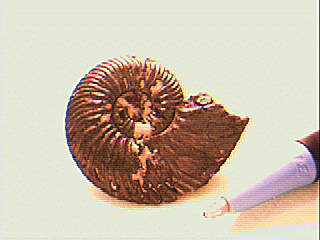
A typical ammonite.
The brachiopods are a class of animals having two shells that surround their soft bodies. Each animal
has a pair of tentacles the animal uses to bring microscopic food into its mouth. They are marine animals and
look like clams but are not closely related. A major difference is that the shells are on the top and
bottom of the animal rather than on each side. During the Paleozoic Era, they were very
common. There are still about 300 species of brachiopods living today. They live permanently
attached to the sea floor. The also are called lampshells.
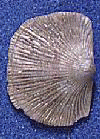
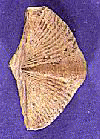 Two typical brachiopods
Two typical brachiopods
Bryozoans look like corals but are much different. They live attached to rocks,
shells, and other objects on the sea floor. Colonies of bryozoans are made up of tiny animals that
built up hard skeletons around themselves. There are still many species of bryozoans alive today, living
in both fresh and salt water.
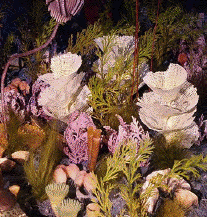 A few kinds of ancient bryozoans.
A few kinds of ancient bryozoans.
Corals are reef builders. Each coral colony is made up of polyps, tiny individual animals, that
create a hard skeleton around themselves. After many years these colonies may form entire reefs.
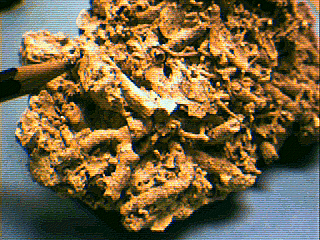 A piece of fossilized coral.
A piece of fossilized coral.
Most horsetails grow in wet, swampy areas or at the edge of ponds or lakes. They have hollow stems
that are jointed. At each joint is a ring of small tooth-like leaves. Some stems have many branches.
Today, horsetails are small plants, but in the ancient past, they grew quite large.
A horsetail rush







